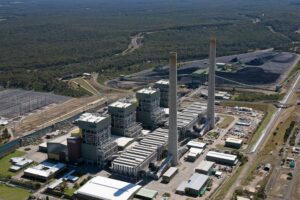Clean Energy Finance Corporation chair, Jillian Broadbent, says Australia’s energy system can safely accommodate significantly higher levels of renewable energy, as long as this was “planned and coordinated” with the rollout of smart technologies, including demand management and battery storage.
Speaking on the subject of Australia’s Energy Future, at a conference hosted by UTS, ISF and BNEF on Thursday, Broadbent outlined the kind of technological solutions the green bank would be backing to help achieve what the PM likes to call the “energy trifecta” of security, sustainability and affordability.

Notably, after a month in which the Malcolm Turnbull and his Coalition has relentlessly campaigned in favour of CEFC being used to finance clean coal, clean coal was not on her list.
Instead, Broadbent used the Sydney event to highlight the organisation’s plans to fast-track the roll-out of large-scale energy storage in Australia, in the same way its $250 million large-scale solar financing program boosted big solar development by bringing down costs.
“We’re close to finalising the transactions under our (large-scale solar) program, and we’re seeing falling technology costs,” she told the conference.
“Now we’re looking to have the same impact with large-scale storage, also working alongside ARENA to support the accelerated deployment of batteries and pumped hydro.
“Just this week we had a roomful of investors meet with 10 clean energy entrepreneurs seeking finance in our first Innovators Demo Day. One strong theme was the focus on the integration of sustainable energy production and storage at the household level, fortifying the grid’s stability and making energy more affordable.”
Further focuses for CEFC funds, Broadbent said, would include strengthened transmission infrastructure, behind-the-meter solutions, innovative business models to get more value from distributed energy resources, and frequency control services including hardware, data collection and control software.
“Australia’s energy mix can incorporate higher levels of clean energy with strengthened transmission, better demand management systems and increased storage capacity,” Broadbent said in her speech.
“These need to be planned and coordinated.
“This is an economic sector in the making, and an exciting opportunity for clean energy and the broader Australian economy.
“We’re working with regulators and the broader energy sector to share our knowledge about the changing energy system.
“We continue to see our role as a catalyst to new investment in delivering a clean energy system of the future – one that ensures that sustainability is not just an idea that is tacked onto existing objectives of security and affordability, but is integral to those objectives.”










